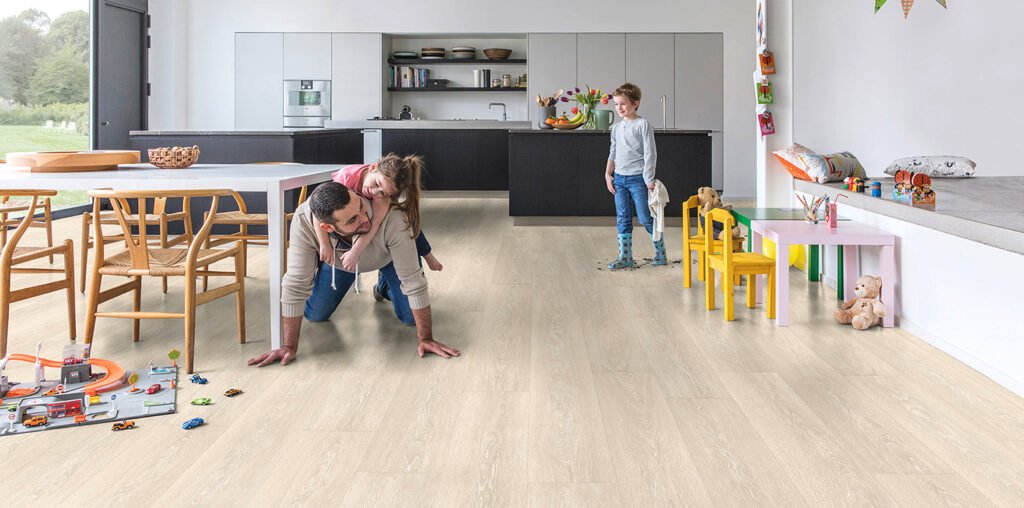If you’ve chosen lvp flooring as a replacement for your current flooring, you’ve made a very smart choice. It’s extremely beautiful flooring that mimics natural hardwood and sometimes even stone.
Most LVP flooring is water-resistant (some types are even waterproof) and it’s also very durable, able to resist dents, dings, scratches, and stains. So no matter what your family throws at it, it still looks great!
Installing LVP is a pretty easy process as long as the subfloor is prepared properly. In some cases, may mean using an underlayment and other times, it may not be necessary.
The main reasons you may need to install underlayment over your subfloor before installing vinyl flooring include boosting the floor’s acoustic capabilities, correcting an uneven subfloor, and providing enhanced moisture protection.
Other considerations may necessitate the underlayment depending on the type of vinyl flooring you’re planning to install in your house as discussed below.
1. Click and Lock Vinyl
Click and lock vinyl planks have an interlocking system designed to be installed directly onto the subfloor. However, if you want to enhance soundproofing and cushioning, it’s advisable to install underlayment before laying down your click and lock vinyl flooring.
In addition, concrete subfloors are porous and can cause moisture damage issues for your newly-laid vinyl flooring. By installing an underlay, you’ll be creating a vapor barrier for your vinyl surface, hence preventing moisture damage from compromising your floor structure.
2. Luxury Vinyl Planks
Luxury vinyl planks(LVP)are a relatively softer flooring option, which means that adding an underlay would result in excessive cushioning, causing dents and accelerating the rate of wear and tear. We- therefore- recommend that you avoid installing underlayment for this type of flooring.
What’s more, most of these high-end luxury vinyl planks usually come with an underlayment material already attached to the bottom side. Therefore making it unnecessary to install additional underlayment. However, if you still feel that an underlay would be great, go for a dense one.
3. Vinyl Sheet Flooring
Generally, you won’t need to underlay for vinyl sheet flooring, as you can simply glue down the sheets directly over most flooring surfaces, including concrete, linoleum, and old vinyl floors.
However, if your old floor is uneven, has bumps and dips, or is buckled. You require to install an underlayment layer before installing your vinyl sheets. This helps to prevent the new vinyl sheet floor from assuming the bumpy texture of the subfloor beneath it.
Key words: Luxury Vinyl Plank, hardwood, LVP flooring, water-resistant, resist, dents, dings, scratches, stains, underlayment, interlocking system, Luxury vinyl planks(LVP)


